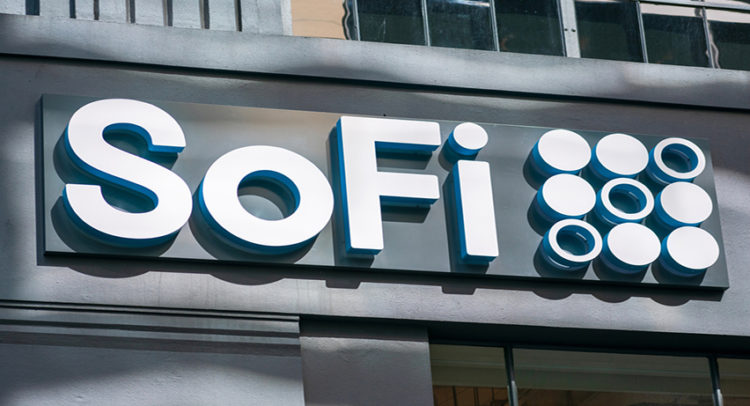Financial technology provider SoFi Technologies (SOFI) recently made a move that should have bolstered its opinion with shareholders. That’s not what happened, though. The stock is currently down today. Its move to acquire digital banking platform Technisys was met with skepticism and frantic selling. Overreaction? Quite possibly, but I’m staying neutral on SoFi until we can get a better look at how well this deal will work.
The last 12 months for SoFi have been up and down. 2022 so far, however, has been mostly down. February 2021 saw SoFi at its highest levels for the last year, just over $25 per share. February into early March, meanwhile, saw the share price drop to just over $16.
An erratic path forward saw ups and downs, but mainly down overall. By mid-May, share prices were struggling to break out of the $14 range. However, mid-May also brought the second major spike with it. The company recovered to challenge $25 again by early June. Another slide, however, saw the company back down under $14 by mid-August.
Another recovery followed, bringing the company back to mid-May levels by early November. That, however, prompted a third drop, bringing us to today, where the company is threatening to break through the $10 mark.
The latest news should have sparked more interest than it did. The company moved to acquire Technisys, a company that offers a core banking platform with several features.
Technisys shareholders would receive around 84 million shares of SoFi common stock, which at the time had a value of around $1.1 billion. This represented less than 10% of SoFi’s share count, reports noted, as of September 30, 2021.
Wall Street’s Take
Turning to Wall Street, SoFi has a Moderate Buy consensus rating. That’s based on eight Buys and three Holds assigned in the past three months. The average SoFi price target of $18.86 implies 73.8% upside potential.

Analyst price targets range from a low of $16 per share to a high of $25 per share.
A Useful If Perhaps Too Expensive Play
On the surface, SoFi’s purchase of Technisys was a sound enough idea. SoFi is a financial technology (fintech) operation. Fintech operations these days have at least a decent chance of making headway in the market. After all, a lot of banks these days want to augment their online presence. They’ve been trying to do so for some time.
Banks move slowly, as a rule. It’s important to their overall makeup that they seem safe and secure, which means few sudden movements. So banks’ progress to digitalization has been extremely deliberate. That suggests there’s still quite a bit of market left for SoFi and its competitors to pursue.
Technisys has already produced substantial results. It currently works in 16 different countries with a combined total reach of over 100 million customers. Its focus on application programming interfaces (APIs) should go a long way in drawing interest.
Better yet, users can update systems without needing to rebuild or even restart. That allows a platform in place to be constantly reliable. Banks need to be reliable more than anything; It’s a big part of their image.
Interestingly, activity has been somewhat mixed in the last quarter. Hedge funds have been flooding out of SoFi, with trading down 781,300 shares last quarter. Insider activity, however, stepped up substantially. Insiders ultimately bought around $1.7 billion in shares in that same time. With the stock currently trading well below its lowest price targets, this seems less like a trap and more like an opportunity.
It’s not immediately clear why the stock lost so much ground after a move that should have been considered complementary. With Technisys’ tools in SoFi’s belt, SoFi becomes that much more useful to potential customers. Since Technisys also had its own customer base, now SoFi can go in and start selling its own tools to that established customer list.
Granted, it’s going to have to actually make those sales to have much impact. However, with online banking still something of a developing market, SoFi should be in a better position to take advantage of that development. Why investors seem less than enthused is, at best, unclear.
Concluding Views
SoFi should be in a better position than it is right now. It’s just brought on a substantial new operation that should produce new opportunities in several directions. With banks still making their moves to online operations, SoFi is in a better position to address those needs.
It’s clear banks remember the pandemic moves that shut down their branch operations altogether in some cases. Banks were already moving more toward online operations well before COVID-19. Though there was some pushback from customers—banks frequently had to acknowledge some physical presence would remain even after digitalization—the move was increasingly online.
Why SoFi isn’t benefiting from its move to better provide banks with online operations isn’t clear. That leaves me neutral on the company as a whole. Let’s see how this all shakes out before setting up a position.
Though the company is trading at a level that implies buying in—a hundred shares can be had for the price of a decent television right now—there’s potential for it to go either way. That may keep conservative investors on the sidelines for a while.
Download the TipRanks mobile app now
To find good ideas for stocks trading at attractive valuations, visit TipRanks’ Best Stocks to Buy, a newly launched tool that unites all of TipRanks’ equity insights.
Read full Disclaimer & Disclosure









